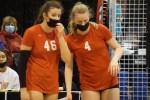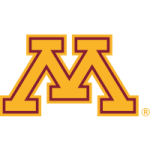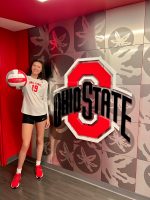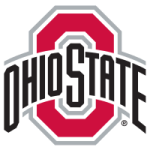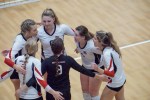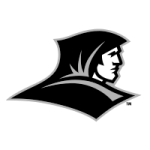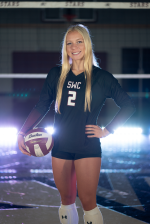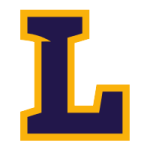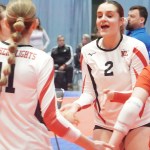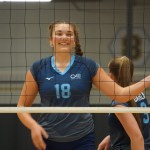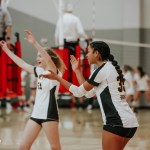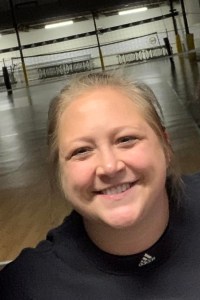Recruiting 101 | Part II: Athlete Profile and Skills Marketing
As the recruiting journey requires everyone involved to pay attention to rules and utilize effective communication, the process typically gets started in one of two ways. First, as college coaches navigate the tournament circuit they will often identify prospects simply by seeing something that intrigues them in an athlete while watching them compete. This then leads to the coaching staff reaching out to the individual with a letter of program interest and an athlete questionnaire. The second way in which the recruiting connection is established is through prospect-initiated communication. Part II of ‘Recruiting 101’ provides information that guides prospects to initiate the recruiting process effectively to schools of interest. Also, helpful tips regarding the use of video are also provided.
In developing a list of schools, I feel it is best to keep the initial list very broad. The first communication initiated by the athlete with a coaching staff is introductory and should be offered to all schools that the individual feels might be worthwhile to explore. It is a best practice approach for college coaches to follow-up with every prospect that writes them to make certain they are not overlooking a recruit that can potentially help their program culture and objectives. With thousands of prospects across the country, it is impossible for coaches to see all athletes. Recruit-initiated communication helps significantly in this regard.
Certainly, some schools may be eliminated early simply based upon the program’s lack of interest or opportunities available. As this situation shouldn’t eliminate a school from one’s list entirely (circumstances can change), this information will certainly help going forward. The broad delivery of self-introduction will also get more eyes on your information and hopefully more viewers at your court during events. The more eyes the better as this can have impact in your favor in the way of feedback from coaches and through the college coach network communicating with one another about prospects. It is not uncommon for coaches to share information about a prospect. For example, if school ‘A’ has watched a great libero but is not in need of a recruit at this position, they may share information with a colleague at school ‘B’. It is beneficial to keep the perspective broad and then narrow the field of schools going forward.
Writing the Letter
College coaches get several letters and emails from prospects throughout the recruiting cycle. As a college coach, I like communication to be clear but also efficient. The ideal introductory communication for me is a brief paragraph that mentions who the prospect is and where they are from of which then leads into a few key details regarding their personal information, physical attributes, athletics experience, academic interests, and contact details for themselves and their coaches.
Personal information should include such details as name, date of birth, graduation year, parents’ names, and home address. This information allows the coaches to classify prospects appropriately regarding what year they would enter as a freshman as well as allow them opportunity to send out materials about their program and school in the mail.
Regarding physical attributes, the information I have paid close attention to includes height and if prospects have recorded any approach and block jump touch results. Without having seen a recruit train or compete, this type of information gives coaches an initial baseline of information to consider.
Sharing details about experience is helpful and should include the primary position(s) for which the prospect would like to be considered. Also, listing high school and club teams as well as accomplishments indicates the amount and types of volleyball the individual has experienced. Listing additional sports here can also be helpful for college coaches. Further, it is also useful to include a current schedule of volleyball events so that college coaches know where they can expect to see a prospect compete. It may be useful to include a small headshot and all jersey numbers worn if they differ from high school to club.
Academic information is also important to include. As every school has their own admissions standards, by providing information such as GPA and SAT/ACT scores, this again gives them a baseline of information to consider. Further, briefly stating areas of academic interest or potential majors will also allow college coaches to determine if their school offers similar or associated academic programs.
Providing contact information is imperative so that college coaches can stay in communication with prospects. Home and email addresses as well as phone numbers are utilized to varying degrees throughout the recruiting process. It is also important to include contact information for the prospect’s high school and club coaches. These individuals not only serve as references regarding the prospect’s skills, experience and character, but can also act as a bridge for communication during periods within the process when college coaches are not allowed to directly communicate with a prospect or their parents.
This list of information is a great start when first reaching out to college coaches. It is a comprehensive collection of important details that will help them to build a profile foundation for each prospect. As they move through the process they will record their notes from conversations and observations that will help them make an informed decision about each recruit.
Creating Video
Sending a video along with the introductory letter helps curb the curiosity for a college coach about a prospect when first learning about them. The best way to do this is to send an email with a link to streaming video access online. This allows for coaches to share it across their staff as well as provide the prospect efficient ways to provide additional video throughout the recruiting process. As short clip highlights are useful, I believe that offering full game action is the best sample to provide for a few reasons. First, short clips are brief and don’t show much action leading up to or immediately following a particular skill or play. Further, these clips tend to only show the athlete in successful situations. As a college coach, it is important for me to be able to assess a prospect in all facets of the game and competitive experience. Just as I want to see her athleticism in motion and competitive success, I am equally interested in seeing how she responds to adversity, mistakes, and what her behavior is like between points and during timeouts. Longer, full-game video streams provide college coaches an opportunity to see additional aspects such as movement patterns around the court, interactions with teammates, and their ability to manage their emotions and the varying levels of competition. Further, it is best to film from a center position beyond the end line behind the prospect with a view of the full court from sideline to sideline. This perspective creates the best vantage point for coaches to see the prospect in each rotation and throughout each play.
Additional Tips
There is an art to recruiting when it comes to establishing a connection and nurturing that dynamic to maximize the end result, whether it leads to an opportunity at a given school or not. There is a lot a prospect can gain from exploring a potential opportunity that does not work out in the end. The feedback alone can help guide the search process in ways that perhaps the prospect and her parents did not consider from the start. In order to maximize the various recruiting dynamics a prospect has initiated, the following information should be considered throughout the process.
A. Prospects need to activate and utilize their high school and club coaches early and often. These individuals are the trusted sources for college coaches as they have the most relevant experience (by comparison) to how these college coaches will engage with a recruit on a daily basis within their own programs. Club coaches tend to be the biggest advocates for their athletes since they engage with them more than high school coaches do. The club season is longer and the events are often of higher caliber regarding overall talent and competitiveness. I encourage recruits to sit down with their high school and club coaches to be part of the process form the very beginning.
B. Prospects should update college coaches when any unique circumstances arise, such as an injury or any situation in which they will not be competing at a certain event. This is a great example of effective communication and responsibility to keep them updated so they are not making unnecessary effort to get to a court only to learn that the prospect is not playing. Also, it is considerate to share if a commitment is made to another school, more so to schools with which a prospect has established a lengthy connection. This helps to close the loop for other schools knowing that a prospect is no longer available.
C. For individual prospects, it is important to consider that social media is being used appropriately. There have been several instances in which athlete prospects have lost a scholarship opportunity due to inappropriate social media activity. It is critical that recruits are mindful of what is being shared and posted given the possibility that some information and images may hinder a character evaluation in the mind of the college coach. There is risk involved with a decision to bring on a recruit that potentially could impact the culture of the program negatively. Social media is one way in which college coaches will evaluate this aspect in their recruits.
D. Attending camps of the schools on a prospect’s list is the best way for the college staff and the prospect to make evaluations. At camps, college coaches get to work directly with these athletes of which allows them opportunity to measure skills as well as coachability. For the recruit, camp opportunities expose them to the training and teaching style of the college coaching staff as well as offer an up close experience with student-athletes and facilities.
For college coaches and recruits alike, the recruiting process has a lot of moving parts to consider. For prospects, a disciplined approach should help to keep information clear and organized as well as provide the best opportunity possible for the right school to emerge amongst the others. It is important to remain mindful that just as prospects are looking for the right school, each college coaching staff is doing the same thing to ensure they find the best prospects for their program, which may involve them seeking information in a variety of places (i.e. coaches, social media). I encourage all recruits and their parents to be mindful and in control of their journey to ensure a positive experience and outcome.
*Mike Bryant is a current professor of sport leadership and has over two decades of experience coaching volleyball. His work with DI, DII, DIII and NAIA schools compliments his experience on the other side of recruiting as a high school and club coach. This includes being a member of the volleyball staff for the University of Washington Huskies during the program’s 2005 NCAA DI National Championship season.

